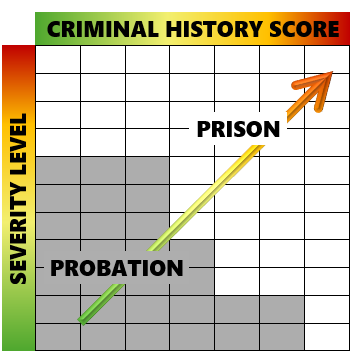What is a Presumptive Sentence?
In Minnesota, a presumptive sentence refers to the recommended sentence for a felony conviction, as determined by the state's Sentencing Guidelines. These guidelines utilize a grid system where the recommended sentence is found at the intersection of two key factors:

Severity Level of the Offense: This reflects the seriousness of the crime, assigned on a scale, with offenses involving aggravated assault, robbery, gun violence, and sex crimes generally considered more severe.
Offender's Criminal History Score: This is based on the offender's prior record, including previous felony sentences, certain misdemeanor/gross misdemeanor convictions, serious juvenile offenses, and whether the offender was under supervision at the time of the current offense.
Key Elements of Presumptive Sentencing in Minnesota
Presumed Appropriate: The sentence on the grid is presumed to be appropriate for typical cases where the criminal history and offense severity align with the grid's designation.
Sentencing Duration: The presumptive sentence specifies a recommended fixed sentence length in months, along with an allowable range around that duration (typically 15% lower and 20% higher).
Judicial Discretion and Departures: While judges generally adhere to the presumptive sentences, they can depart from the guidelines and impose a different sentence if they find substantial and compelling mitigating or aggravating circumstances. This may result in a higher sentence (upward departure) or a lower sentence (downward departure) than what the guidelines recommend.
Mandatory Minimums: In cases with a statutory mandatory minimum sentence, the mandatory minimum takes precedence over the guidelines' recommendation, according to the Minnesota House of Representatives.
